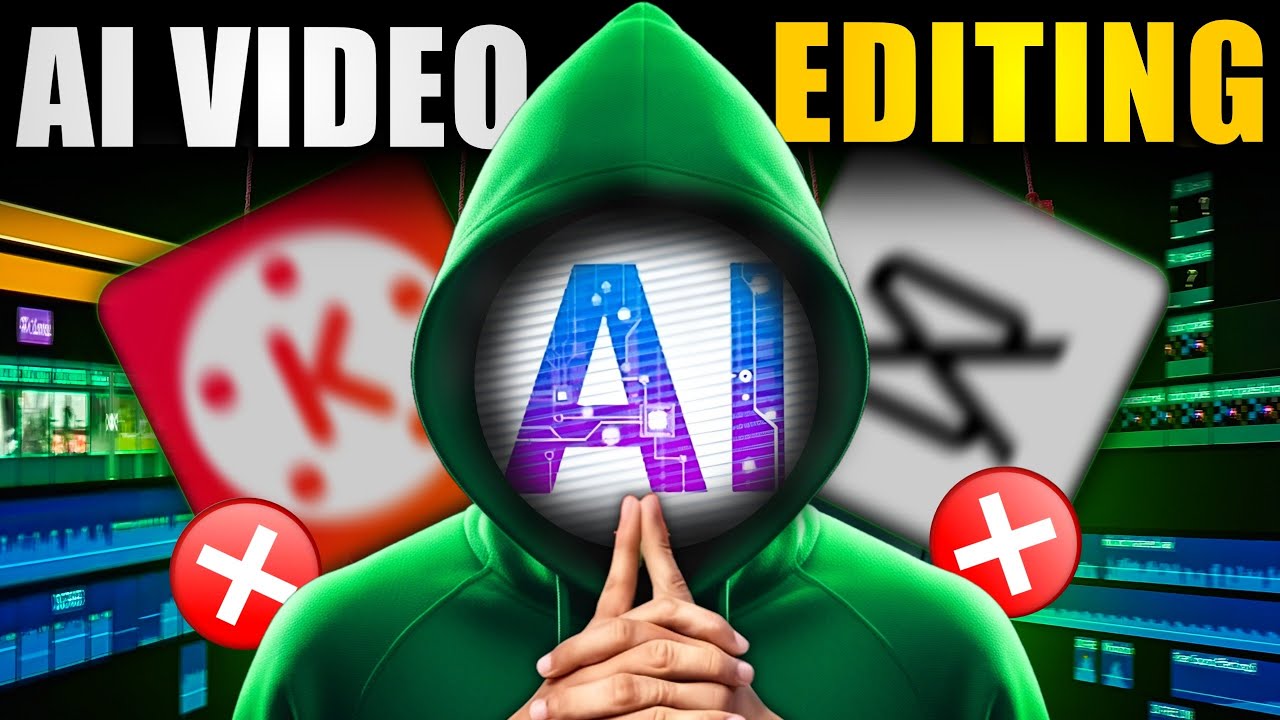In 2025, AI has completely transformed the way we edit videos, making professional-grade video editing accessible to everyone—from beginners to seasoned pros. Whether you’re looking to create content for social media, YouTube, or even professional projects, AI-powered video editing tools can help you craft stunning videos in less time and with less effort. In this article, we’ll guide you on how to use AI for video editing and make you feel like a pro!
1. Understanding AI in Video Editing
AI, or Artificial Intelligence, has made major strides in the world of video editing. It uses advanced algorithms to analyze and understand video content, offering tools that automatically perform tasks that would normally require manual work. Think of it as a personal assistant that speeds up your editing process, enhances the final product, and saves you hours of work.
To edit videos like a professional, leveraging AI-powered tools can significantly streamline the process. Adobe Premiere Pro with Adobe Sensei is a robust choice, offering intelligent features like auto-reframing, color grading, and scene editing, which save time on tedious tasks while allowing you to focus on creative aspects. Runway ML brings AI-driven capabilities such as background removal, object detection, and video enhancement, making it ideal for creators seeking high-quality results with minimal effort. For beginners, Magisto simplifies video creation by using AI to automate most of the process, ensuring quick and polished videos without a steep learning curve. Pictory stands out by transforming scripts or blog posts into dynamic videos, providing customizable styles and voiceovers to suit your needs. Descript, on the other hand, offers a text-based approach to video editing, making it perfect for those who prefer to edit through transcripts, ensuring a user-friendly and efficient editing experience.
3. AI Features to Enhance Your Video Editing
AI-powered video editing tools are revolutionizing the way content creators work by automating tedious tasks and enhancing creativity. Features like auto-cutting and scene detection allow AI to analyze your video and identify key moments, automatically trimming and organizing the footage, saving you hours of manual editing. Voiceover and text-to-speech technology enable you to generate high-quality voiceovers without the need for recording your own voice, making it easier to add narration or commentary. AI-driven smart filters and effects can detect facial expressions and adjust lighting, or even apply makeup filters, enhancing your video’s visual appeal. Auto-color correction and grading streamline the post-production process by analyzing your footage and applying professional-grade color adjustments, giving your video a polished, cinematic look. Additionally, AI tools like Runway ML and Descript offer background removal and replacement, allowing you to create a clean, professional backdrop with minimal effort. Finally, automatic subtitles and transcription features save time by generating accurate captions, improving accessibility and making your content more inclusive. With these AI advancements, video editing has become more efficient, accessible, and professional than ever before.
4. How to Edit Videos Using AI: Step-by-Step Process
Editing a video with AI-powered tools is a seamless and efficient process. Start by uploading your raw footage to your chosen platform, which typically supports a wide range of file formats, making it easy to begin. Next, select an editing style or template that best suits your project, whether it’s a cinematic style, social media format, or vlog-style layout. The AI will then automatically scan your footage, identifying key moments and making suggestions for edits, or even performing automatic cuts and trims. You can accept these AI-driven changes or refine them further to match your vision. After the heavy lifting is done, the customization phase begins, where you can adjust the pacing, fine-tune effects, and enhance elements like color correction and audio. Many AI tools also offer music libraries, voiceover options, and sound effects, allowing you to effortlessly add these elements, with AI suggesting tracks that complement your video’s mood. Finally, once you’re happy with the result, exporting is straightforward, with AI tools optimizing your video for various platforms like YouTube, Instagram, or TikTok, and in some cases, enabling direct sharing from the platform itself. This streamlined workflow makes it easier than ever to produce professional-quality content.
5. Tips for Getting the Most Out of AI Video Editing
When using AI-powered video editing tools, experimenting with different templates and editing styles is a great way to find the best fit for your content. With a wide range of options available, trying out various styles can help you discover which aligns with your vision. However, while AI handles the automation, it’s important to maintain a personal touch. Custom transitions, unique effects, and thoughtful edits that reflect your creative style will help your videos stand out from the crowd. AI can be an incredible asset for efficiency, especially when it comes to repetitive tasks like trimming footage, color grading, and adding subtitles. By leveraging AI for these time-consuming tasks, you can free up more time to focus on the artistic aspects of your video, ensuring the final product is both polished and uniquely yours.
6. The Future of AI in Video Editing
In 2025 and beyond, AI video editing tools will continue to evolve, offering even more powerful features. Expect improvements in things like real-time collaboration, better AI-driven suggestions, and even more intuitive interfaces. As technology advances, video editing will become even more accessible to anyone with a creative vision.
Conclusion
AI is revolutionizing video editing in 2025, making it easier than ever for anyone to create high-quality videos. Whether you’re a content creator, marketer, or hobbyist, AI video editing tools offer powerful features that save time, enhance your videos, and make you look like a pro. By understanding the right tools and AI features, you can take your video editing to the next level and stay ahead in the competitive digital landscape.
